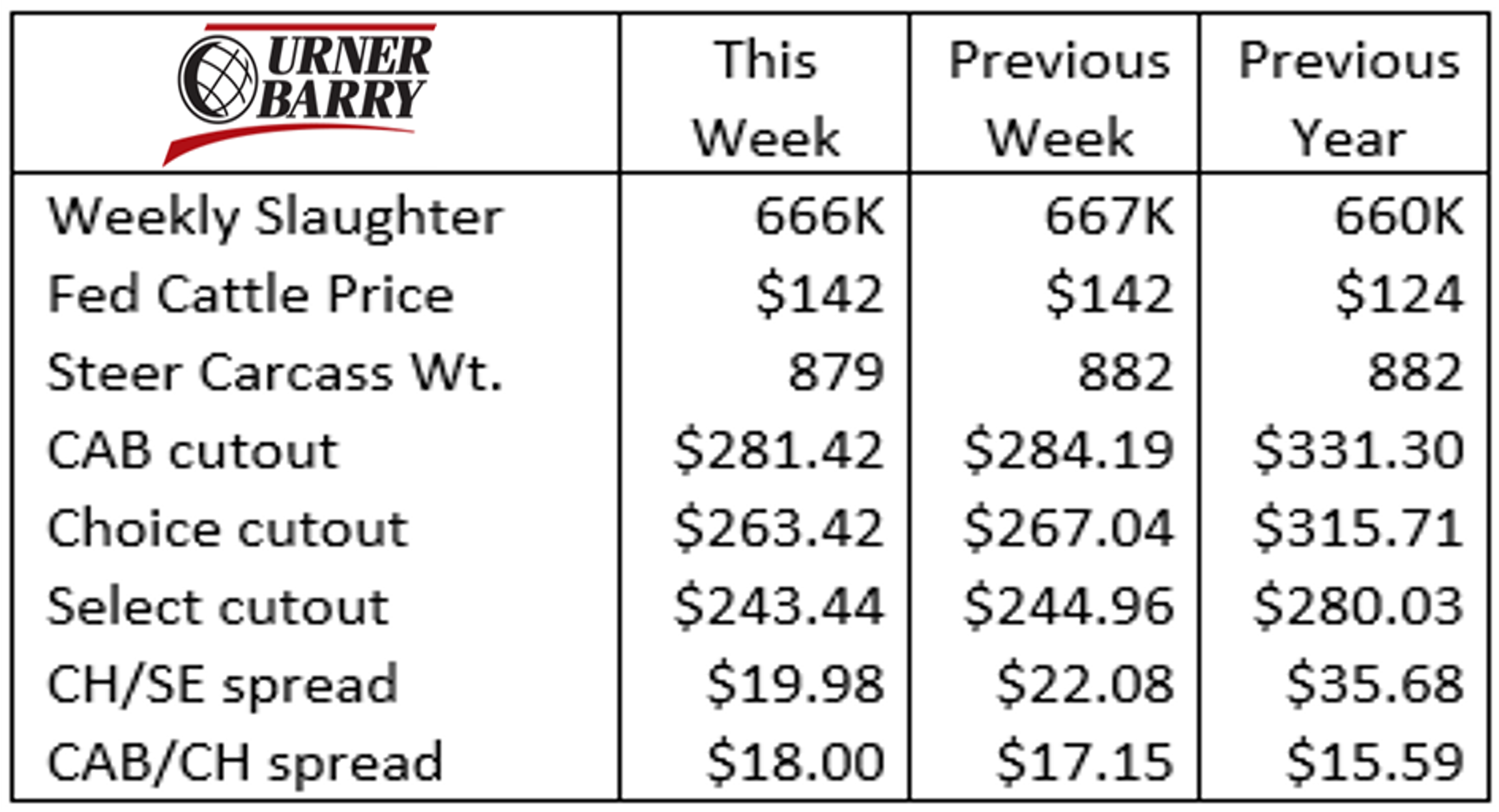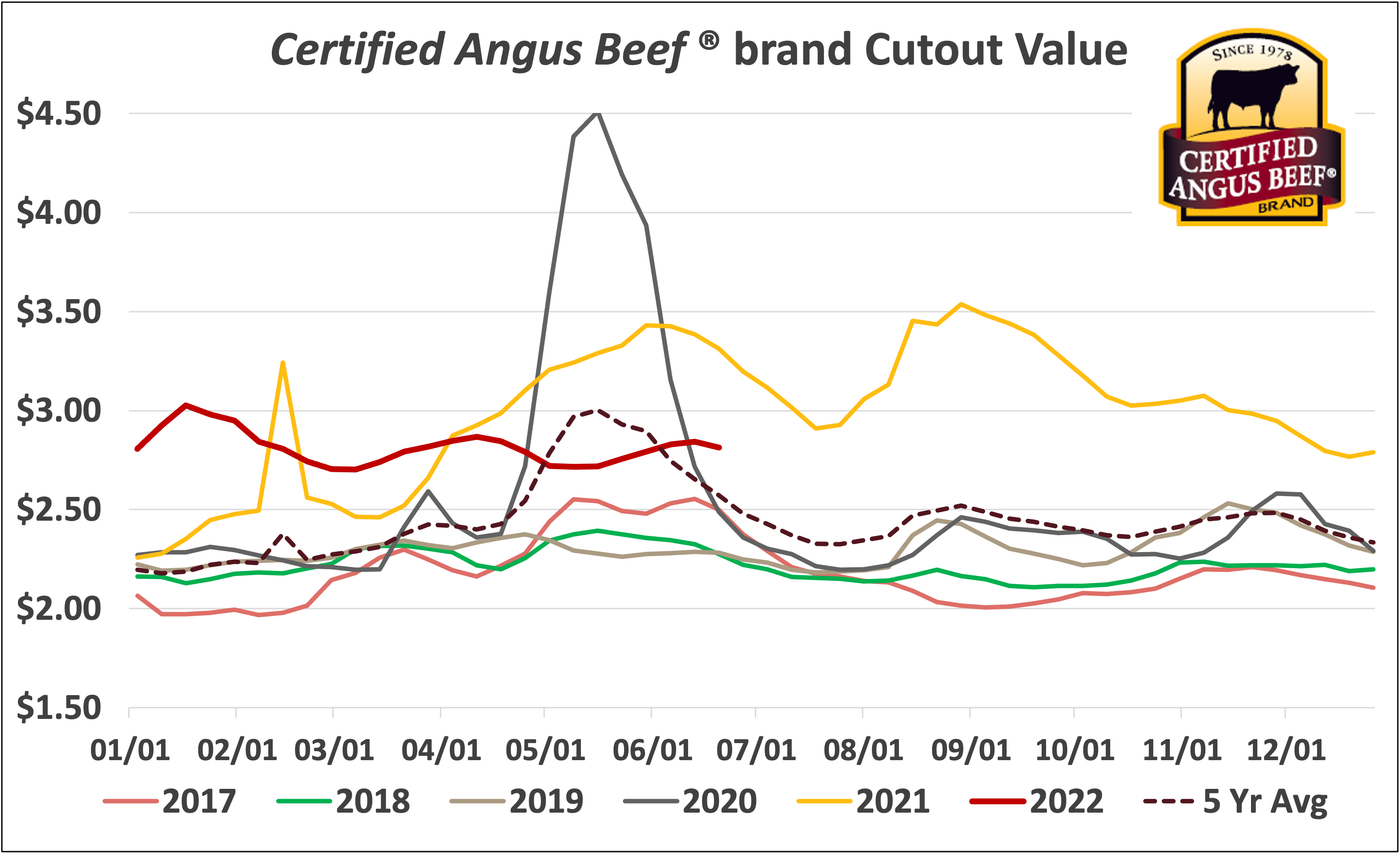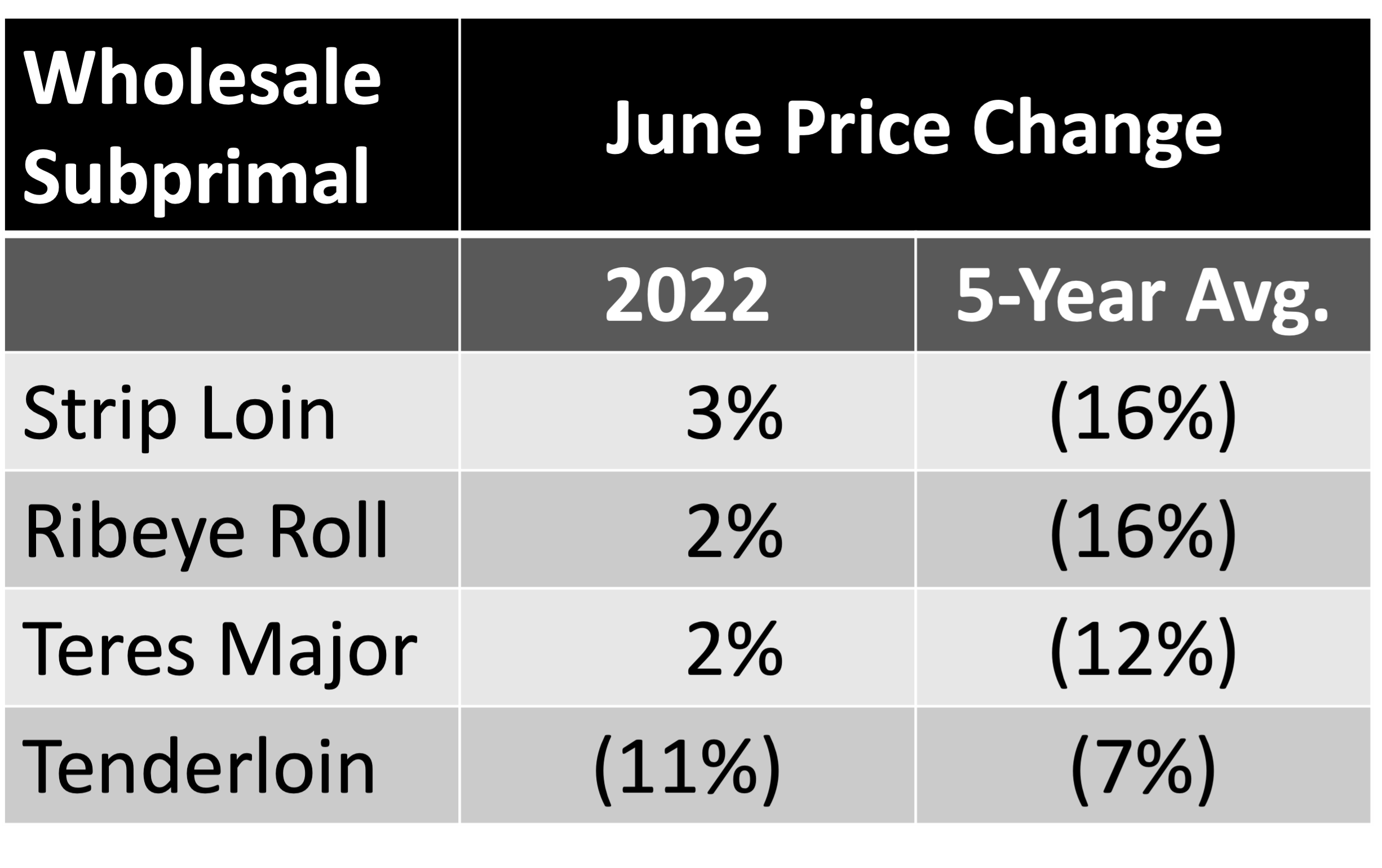CAB Insider: Strong Finish to June Cutout Values

As the June summer heat turns up, so has the fed cattle market. The past two weeks have marked an average of $142/cwt. live cattle cash trade with a continued historically wide price range from north to south.
Fundamentals in the fed cattle sector are steadily at odds so far this summer with very “green” fed cattle in the northern tier of the feeding region. Early trade reports this week indicate more pricing up to $148/cwt. live in the north. Feeders are pushing show lists to take advantage of the summer high, exacerbating the poor quality grade in the region even further.
The Cattle on Feed report released last week was neutral to slightly bullish, with the trade guesses ahead of time aligning rather well with the reported numbers. The exception was May placements at 97.9% of last year’s total, slightly smaller than analysts’ expected.

The smallest May placement number since 2015 comes on the heels of exceptionally large head counts placed on feed since late last fall. Thus, the cattle on feed number of 11.84 million head is record-large to start the month of June. Cattle under 700 lb. were more than last year’s May report and cattle over 800 lb. decreased by over twice that many to result in the net decline.
The placement numbers for months leading up to the current time have indicated more ample finished cattle supplies and it looks like we’ll await the potential for that in July.
The boxed beef trade finally gave up a measurable price setback this week. The week of June 13 revealed mixed price action in a report that signaled the seasonal shift lower. The wholesale cutout prices can be read as rather muted compared to many other inflationary items in the basket of consumer needs. As a matter of fact, the CAB cutout price of $2.81/lb. is $0.50/lb. cheaper than a year ago at this time, which was a record high of 3.31/lb.
The CAB cutout price widened the gap over Choice, declining just $2.77/cwt. versus the Choice cutout, which dipped $3.62/cwt. The lack of larger quantities of Prime (both commodity and CAB), as well as CAB traditional products, may prop up middle meat values through July a bit more than we’d normally anticipate.
Strong finish to June Cutout Values
Closing out the month of June the boxed beef pricing complex typically undergoes a directional change. This is typified by declining middle meat demand as Independence Day holiday buying stereotypically features burgers and hot dogs. It’s quite a contrast to the three preceding steak-centric spring holidays beginning with Mother’s Day.
Beef industry sales attention shifts toward lower boxed beef prices through July, seeking a summer price low the first week of August.
The wholesale boxed beef market last week posted lower cutout values, signaling the onset of this seasonal trend. However, given the economic anomalies in place this year, cutout values will finish June a bit stronger than in recent years, measured against mid-May prices.
The abnormal price spike in the May to June 2020 market prices added a pronounced effect to the five-year data, muting what would otherwise be a flatter price pattern. A look at this month’s CAB cutout shows firmer prices from May into June, working against the five-year trend with lower values. Indeed, last week’s cutout prices were lower, but that decline came a week later with a smaller price drop as well.

While we point to economic inflation to explain many price changes in 2022 this seems secondary at the wholesale beef level. Cost of business is higher for everyone, but there appears to be resilient demand for some steak items propping up cutout values. Since this is not the case for every cut across the carcass, inflation is not the only driving factor.
The currently lower quality grade trend and CAB carcass certification pace we’ve followed closely for many weeks may receive some credit for higher middle meat prices. Demand appears to be strong and forward sales for premium quality grade product has been healthy in latest data.
Strip loins, for example, are one of the most reliable cuts in terms of following seasonal price patterns. The five-year average shows a price peak during the first week of June then a 16% drop to the end of the month. Unconventionally, strip loins this month have increased 3% through the third week.

Similarly, ribeyes have peaked the week before Memorial Day in the trend before also declining by 16% in price by the end of June. This month ribeye prices have increased by 2% from late May to the third week of June. However, last week’s data reveals a five-cent average price drop to end the stronger price trend.
The lesser-known Teres Major (clod tender) from the chuck is also seeing unexpected demand and price resiliency matching last year’s breakout pricing pattern. June experienced a 2% price increase instead of the typical 12% decrease over the past five years.
Not to be forgotten, tenderloins are the odd item out when it comes to premier steak cuts. This item lost all pricing power after the first week of May. Working against the current June pattern set by each of the preceding items, tenderloins typically see a price peak during the first week in June. Instead, they are 16% cheaper in the latest data since May 1. However, the early May wholesale price of $14.38/lb. could easily have been too strong for the spring market, as spring is not normally categorized as a high-demand period for tenderloins. Tenderloins see their best demand in the fourth quarter.
These highlights don’t negate the expectation for softer July boxed beef prices but are encouraging with regard to consumer demand in the wake of inflationary concerns.







